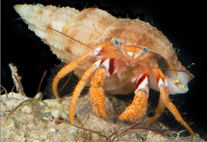Abstract
Between 4th and 18th March 2014, an international group of biologists carried out a hydrobiological expedition to the Ounianga-Tibesti area of northern Chad (Africa). The Tibesti is a desert volcanic area, intersected by the beds of ancient rivers which were active in the Tertiary. In deep canyons there are small water bodies (gueltas/aguelmans), fed by rain and spring water. They are rich in zooplankton, benthos, and even fish, but their groundwater fauna has previously been unknown. Groundwater samples collected in the vicinity of one guelta contained Syncarida, Isopoda, and Copepoda. Among the latter, two new species were recognised, Haplocyclops (H.) henrii sp. nov. and Parastenocaris joi sp. nov., together with a third species, Pilocamptus schroederi (van Douwe, 1915), previously known only from the littoral zone and wet mosses of Lake Victoria. The Tibesti area is thus the third known location of P. schroederi. All these species have a Gondwanaland distribution and are probably relicts of the Tertiary fauna, formerly widespread in the Sahara. Together with descriptions of two new species, a detailed re-description of P. schroederi is presented, along with remarks on their ecology.

